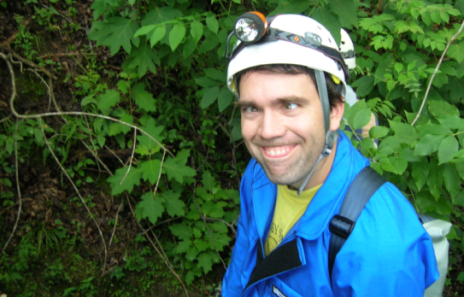Dr. Steve Wallace (AKA Wally) prepares for his first strenuous caving trip by exercising eye and facial muscles (note the brand new helmet, light, and coveralls).
Purpose of trip: To investigate reported skeletal remains in the far reaches of an Alabama cave.
(unless otherwise noted, all photos by Blaine Schubert)
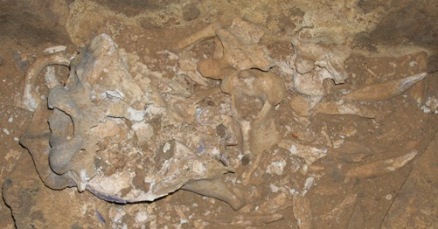
The skeletal remains turned out to be those of a black bear, Ursus americanus. The bone was highly degraded and thus only teeth and foot bones were collected for future research. The picture shows the fragmentary cranium (upside down).
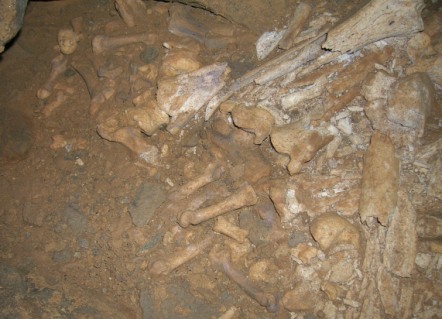
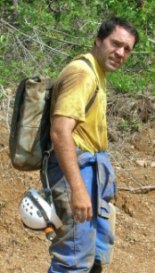
Right: Wally survives the Alabama cave ..
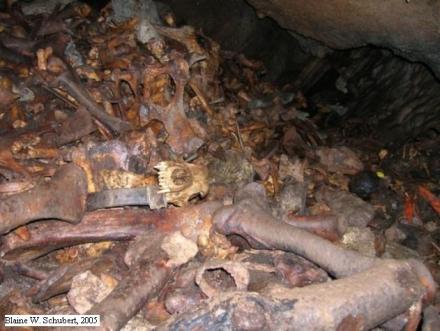
An extraordinary recent bone assemblage in a northeastern Tennessee pit cave. This deposit is primarily made up of horses, cows, pigs,and dogs (note the dog cranium and collar in the center of the picture). For the most part these historic farm animals appear to have been dumped into the pit as carcasses.
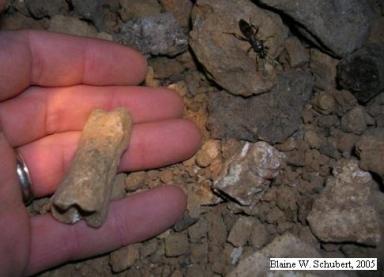
A number of known Pleistocene cave localities in northeastern Tennessee are now being reinvestigated. The picture to the left is an example of one of these sites. The photo shows a phalanx in hand and two teeth on the cave floor. These belong to the extinct flat-headed peccary Platygonus compressus. To learn more about this species click here.
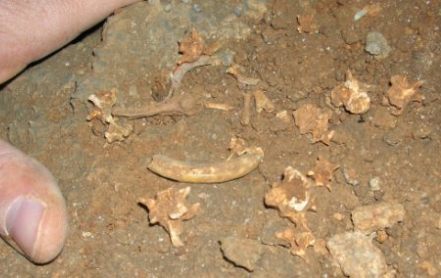
Several new sites have recently been found in northeastern Tennessee. This picture shows snake vertebrae, as well as rodent and frog remains. This important new locality is also producing extinct Pleistocene megafauna (such as tapir).
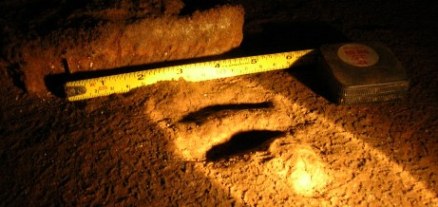
These tracks from a Tennessee cave are thought to belong to Platygonus compressus, a species that used caves extensively.
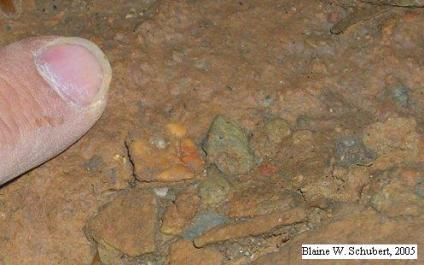
Another recent discovery occurred in the far reaches of a northeastern Tennessee cave where an old entrance is now sealed. This site is producing a boreal fauna (things that live much farther north today) as well as extinct taxa such as a large form of armadillo. The picture to the right shows an osteoderm from this species (osteoderms make up the "shell" of the animal).
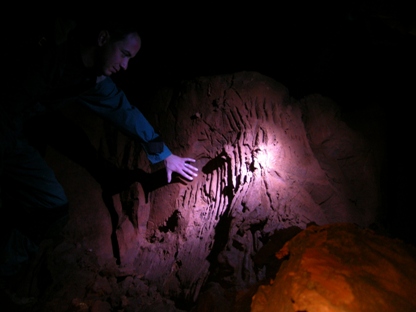
Finally, another cave in Tennessee recently revealed some of the most extensive trackways and claw marks known in North America. Most of the tracks are from black bears and peccaries and the claw marks are from black bears (shown in picture). Such trace fossils are rare, highly informative, and extremely fragile. Conservation efforts are now in progress to preserve these delicate "stories" in the clay.
Photo by Steve Wallace, 2005
